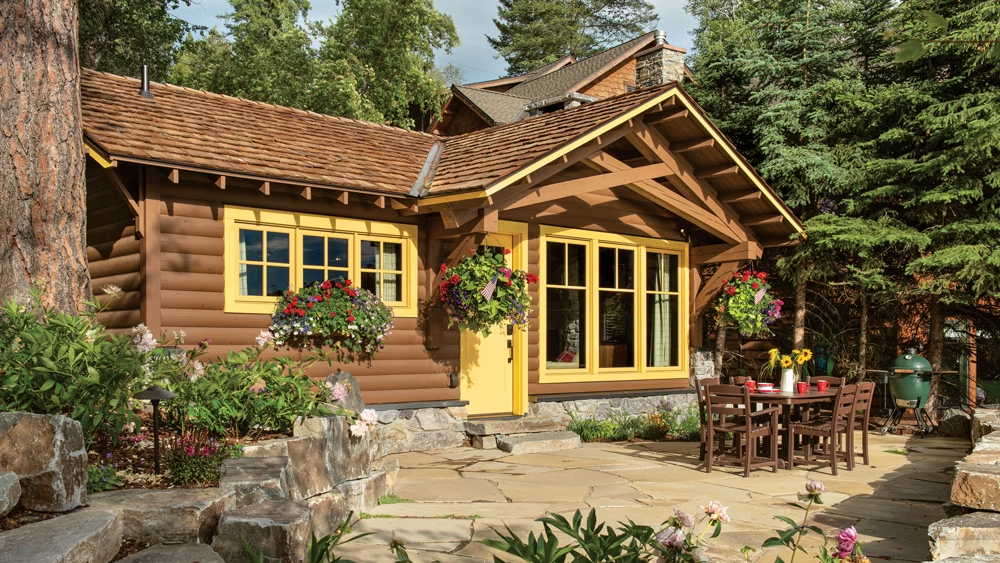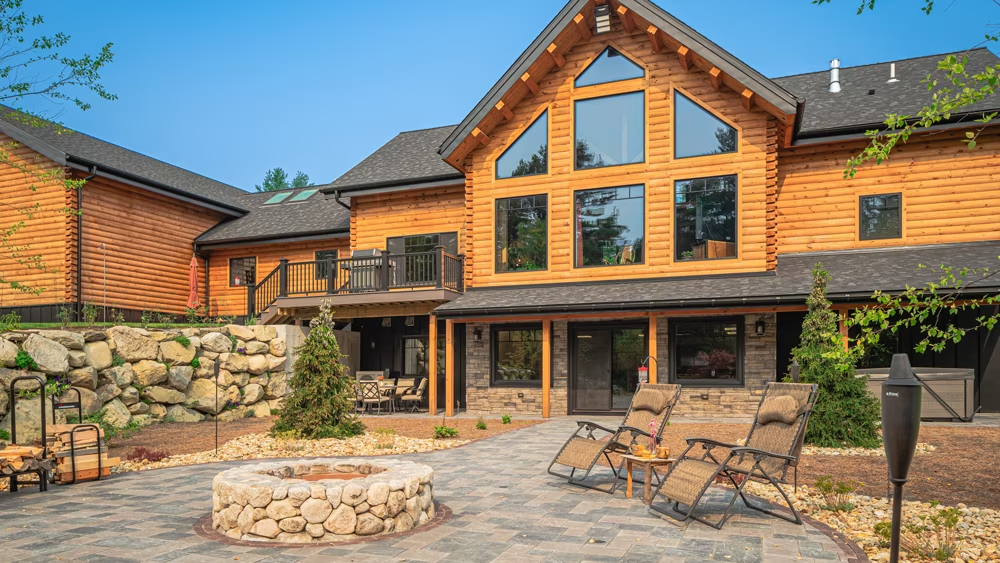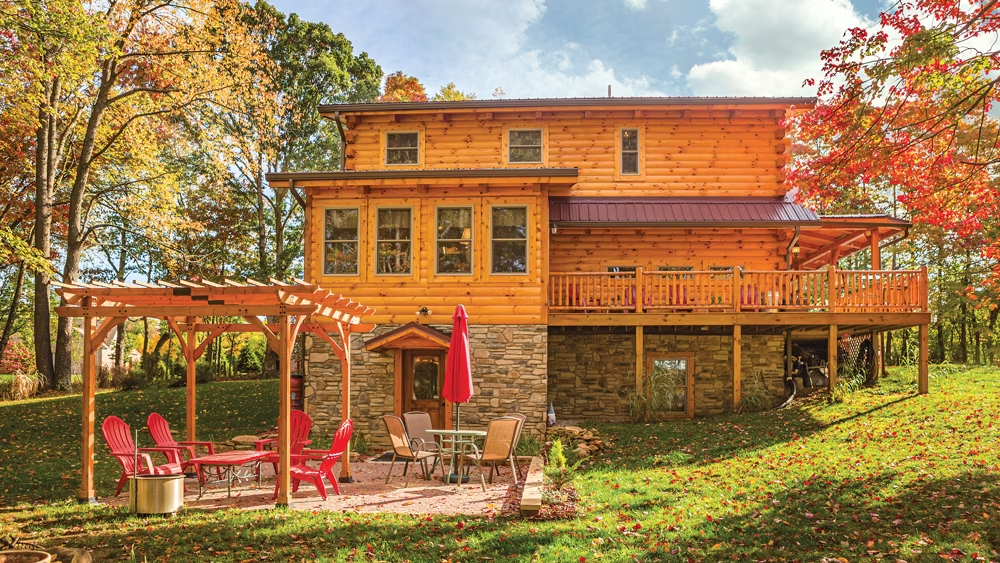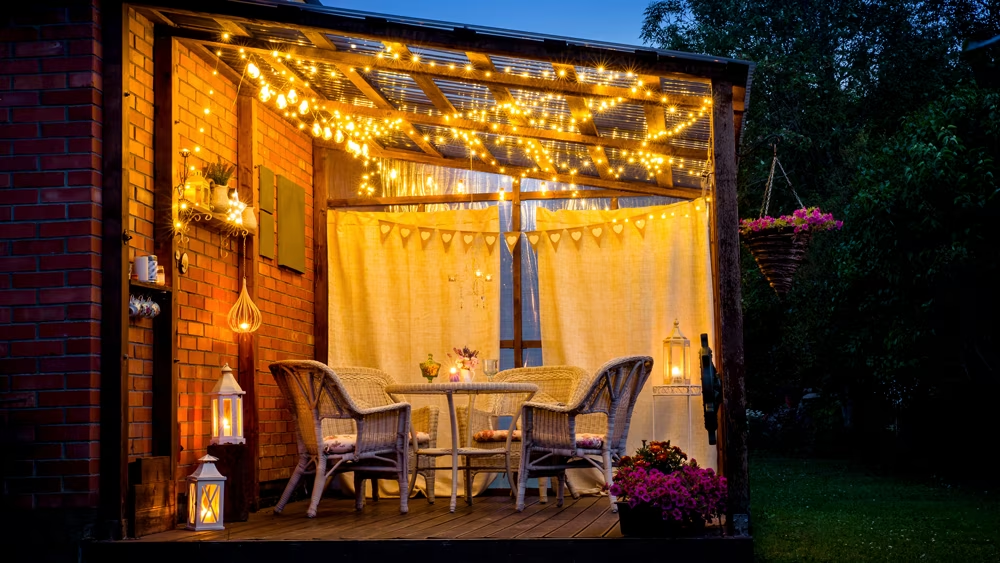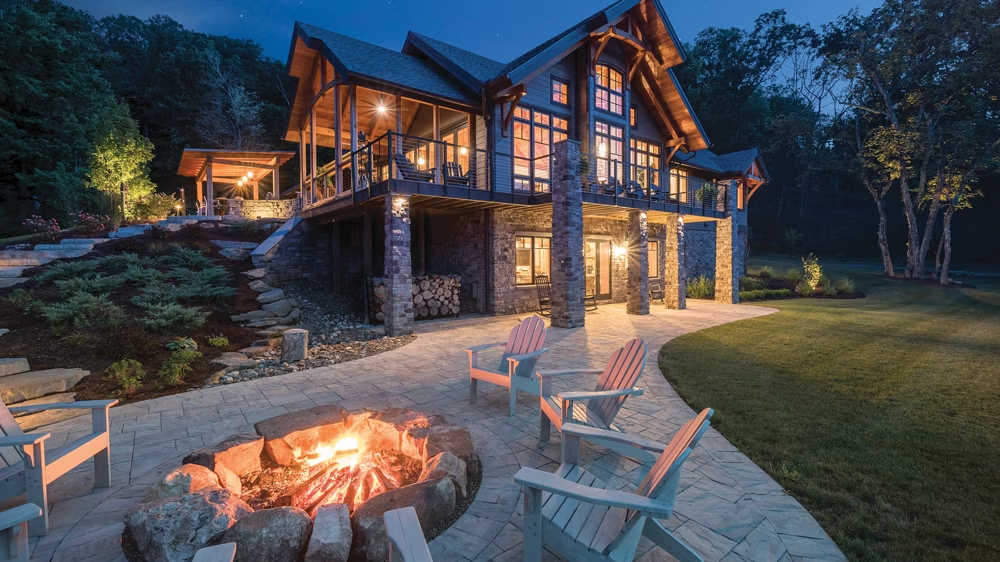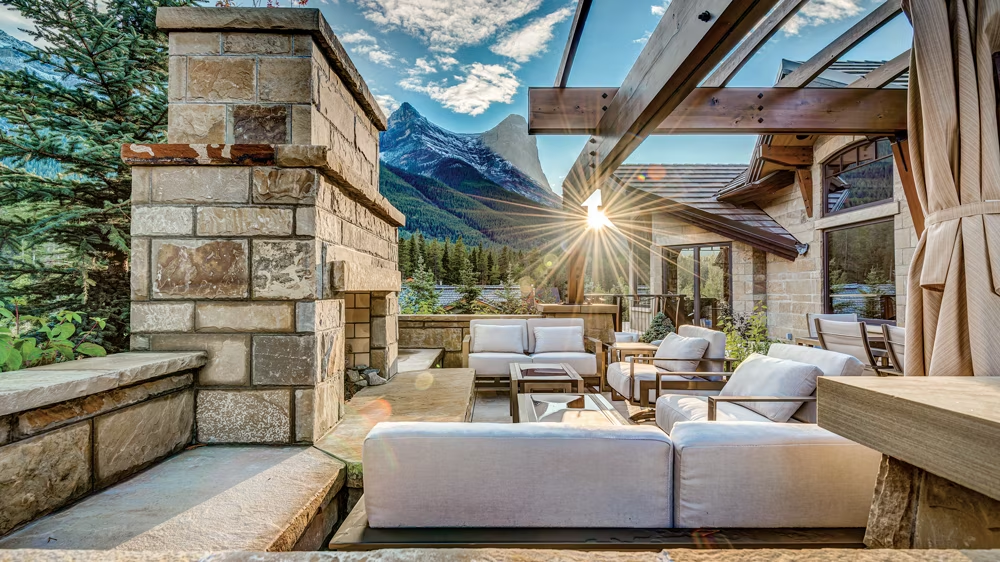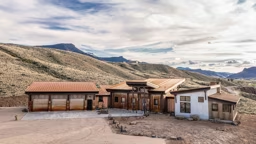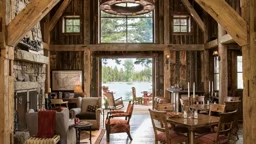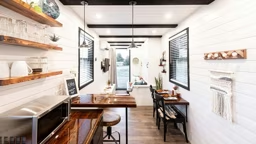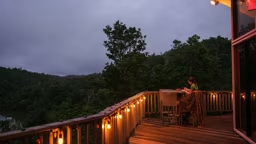Adapted from the Neighbor Editorial Team
Cabins and cottages are about connecting – to ourselves, each other and, importantly, the great outdoors. No “room” in the house fosters that as well as the one outside the house — the patio. Perhaps long ago it might have been a stretch to call it a room, but with the high-function, high-style furnishings, finishes and accessories on the market, these outdoor spaces are no longer an afterthought.
Feeling overwhelmed by today’s array of options? Neighbor, an outdoor furniture company, polled 100 design professionals about how to perfect the patio. It turns out, it’s not too complicated.
“The perfect patio consists of comfortable furniture, somewhere to put out food, greenery and different options to help control the temperature,” says Ericka Violett, principal designer at Sill Design Co.
Choose wisely in these categories, and your patio can serve you season after season, for years to come. From the ground up, here’s how to perfect your patio’s design.
Flooring
Nowhere does form and function come together quite like outdoor flooring. Tasked with defining the space, providing a safe surface to navigate and showcasing your style, the flooring you choose must be stable, sturdy, weather-resistant and comfortable. In Neighbor’s poll, 69% of designers said it’s worth splurging on decking or flooring.
Stones like granite, marble, limestone, flagstone and slate are popular thanks to their natural strength. Locally available stones can be a cost-effective choice (and complementary to natural surroundings). Alternatively, concrete pavers offer a contemporary aesthetic and can last upwards of 50 to 100 years if properly installed.
That being said, according to the survey, most designers preferred natural materials for style and durability, with 34% voting for stone and 20% for wood.
Wood is an option that can take on either a rustic or modern appearance, and varieties like teak, ipe and western red cedar naturally repel moisture, resist deterioration and withstand heat, making them ideal materials for an outdoor deck or patio exposed to the elements. Wood will require periodic cleaning and maintenance, like applying protective sealants and cleaning solutions to maximize the life of your deck. Splurge on teak, ipe and cedar, or save with species like spruce and treated pine.
Furniture
When asked about the factors that were most important to them in outdoor furniture, the designers ranked style, price and durability highest, and for good reason.
“Quality furniture is always worth splurging on,” Ericka says. “Investing in furniture that will last for many years always beats out furniture that looks great at first but shows wear and tear quickly.”
What materials translate to long-term performance against weather and wear-and-tear? Real teak wood has the potential to last for decades with proper care, and it’s also a top material among polled designers, taking 39% of the vote for preferred outdoor material.
For cushions on top, sun-safe materials like, Sunbrella fabrics, prevent mold, mildew, fading, water damage, stains and discoloration, all while mimicking the comfort and style of indoor cushions. Try “Sail Away Sunflower” for a cheery cottage or “Relate Ivy” for a classic, lodge-inspired camp vibe.
Landscaping
Whether you’ve got an Alpine hideaway or a lovely Low Country cottage, you’ve probably considered how your home fits in with the land around it. When it comes to your patio, nothing connects it better to the greater land than, well, landscaping. Of the designers polled, 65% agreed landscaping is worth the splurge.
One strategy that’s beneficial for you and the land alike is the use of native plants. When asked to rate the importance of using native plants on a scale of 1 to 10, the average rating was 8.2.
These plants boast their own natural defenses against local threats, like regional pests, diseases and the climate. They will likely require less watering, less fertilizer, less pesticides and overall fewer resources year-round. Win-win.
Ben Noyes, professional landscape architect and founder of Habitat Landscape Consulting, says, “You want to use as many native plants as possible, because they were designed to thrive in your climate. Native plants will always require less irrigation and typically less pruning/clean-up. You also want to make sure you have the right size plant in the right spot so that you aren’t having to trim anything more than necessary.”
Lighting
Nothing dials up the ambiance quite like lighting, and the designers polled agreed. When asked about patio lighting, string lights were the most preferred lighting for design. Easy to see why: string lights are versatile, easy to install and can be hung almost anywhere. Hang string lights over your dining space, above your seating, up above a fire pit or even around a tree.
Fire Pits
Up there with lighting in terms of its importance to ambiance, a fire pit is a must-have at many cabins. Not just for looks, a proper fire pit provides warmth, making your patio usable longer into the evening and even into colder months. Center yours as the main seating area or set it up off to the side as a separate zone for s’mores and drinks around the fire. Neighbor’s survey revealed that most professionals preferred a wood-burning fire pit over a gas or propane. The soundtrack of a crackling fire with that classic campfire smell has undeniable appeal, and wood pits produce more heat than propane- or gas-burning pits, making them more practical for outdoor cooking. That being said, smoke can be a nuisance and smokeless wood-burning fire pits are an attractive alternative.
Privacy and Shade
Finally, perfecting patio design isn’t entirely about what you add, but also what you keep out. Exposure to the elements and a lack of privacy could leave your patio feeling less that enticing.
“Always consider shade and air flow,” advises Ben. “Especially if designing in a warm climate, you will never want to sit outside if it isn’t physically comfortable, regardless of the furniture, landscape or other decor.”
If you’re building a patio from scratch, the first factor to consider is its positioning. If your patio is relentlessly baked by the sun every day, that leaves few hours when you’ll actually want to use it. Consider the sun’s position in different seasons, but particularly in summer, as you site it on your property.
For renovators, or those with limited flexibility on patio placement, 53% of designers recommended a covered pergola. Not only do these structures pair perfectly with log and timber-framed cabins, but they also provide the best of both worlds, allowing in light and airflow while blocking harsh direct rays.
Any one of these tips alone can take your patio from so-so to something special. Try out just one or all of them and see how you can make your patio that much more inviting — you may be surprised how much more frequently you use it. And your efforts won’t be in vain. According to Neighbor, “When you consider the long-term payoff of redesigning your patio, you can get an estimated 64.8% return on your investment when selling your home.” That’s pretty perfect if you ask us.



